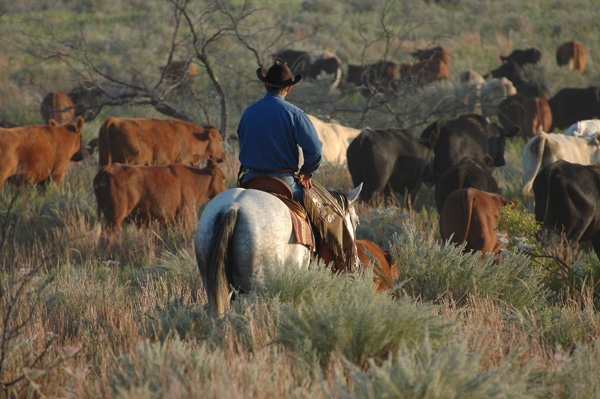Cull early and often to keep your cowherd productive
Keep BQA guidelines in mind when making culling decisions.
September 15, 2016

Culling cows and bulls eliminates undesirable animals from the herd and makes room for more productive animals to be added into a beef program. The best time of year to cull depends on the local environment and climate that a ranch is located in. Most cow-calf ranches operate on a spring calving program, selling their calf crop each fall. Culling open cows in the fall is a popular method, but cows can also be evaluated during the spring as well.
Jason Faubion, assistant director of the Ranch Management Program at Texas Christian University in Fort Worth, Texas, recommends culling early and often to keep the ranch operating as efficiently as possible. Cows only earn a profit – and therefore their keep – if they produce a calf each spring.
“Whether cows are culled at branding or at weaning, the decision to cull should be made prior to any other management practice,” says Faubion. “Never vaccinate, deworm, or otherwise treat a cow before deciding to remove her from the herd.”
Following this practice serves a twofold purpose: first, it saves the rancher money; second, drug withdrawal periods apply to cull cows being sold for slaughter.
“Always keep records of such treatments,” Faubion says.
Instead of – or in addition to – traditional fall culling, ranchers can evaluate cows during the spring branding season, then sort off dry cows or cows that appear unable to raise a healthy calf. This conserves grass and other resources for more productive cows.
Most ranchers cull cows that come in dry or open in the fall. Old cows, broken-mouthed cows or cows with bad udders are also usually culled. The standard procedure involves running the whole cowherd through a chute and hiring a vet to check for pregnancy via palpation or ultrasound.
Old-time managers, like the late Britt Lay of the Whitehorse Ranch in eastern Oregon, visually assessed the cow herd to determine pregnancy. All cows that appeared “snake-bellied” were culled, saving the company the per-head chute fee charged by a vet to preg check. Any open cows that were missed were caught and culled in the spring when they didn't produce a calf.
“Regardless of the method used, sort off the open cows and strongly consider culling them,” says Faubion. “If an open cow is allowed to roll to another breeding season herd, be sure to identify her.”
Cull cows are commonly sold as hamburger meat. This product typically generates the lowest price at the local sale yard, but there are opportunities for producers to add value to this product. Some packers may be willing to pay more for cull animals they can purchase in larger lots, or possibly offer to help with the trucking for full loads. Grouping cows by age, frame size and flesh can help bring a higher price as well.
“Year-branded cows have even commanded added value in past years as a means of age and source verification,” says Faubion.
Bulls are usually tested prior to the onset of the breeding season, and those found to be unsatisfactory are culled. In the Great Basin of the western U.S., the breeding season typically runs June-August. Faubion recommends a thorough breeding soundness exam (BSE), which includes a semen evaluation, testing for any reproductive diseases and an examination of the physical structures of the bull.

BEEF Seedstock 100 List
Looking for a new seedstock provider? Use our UPDATED Seedstock 100 listing to find the largest bull sellers in the U.S. Browse the list here.
“If a bull falls short in any of these areas, it should most likely be culled,” says Faubion.
Bulls can be culled around age five, when they still have useful, productive breeding years ahead of them, in order to command a higher price from a smaller cow-calf producer. This also ensures that the bulls won't grow too large to service heifers, which are smaller-framed than full-grown cows. Waiting to sell the bull until he is older will get more years of use out of him for the original owner, but he'll bring a lower price when he is culled.
This article was originally printed in the Nevada Rancher magazine. To read more from the Rancher, visit www.news4nevada.com. More of Jolyn Young's work can be found at www.jolynyoung.com.
You might also like:
Young ranchers, listen up: 8 tips from an old-timer on how to succeed in ranching
13 utility tractors that will boost efficiency in 2016
Burke Teichert: How to cull the right cow without keeping records
3 weaning methods compared; Which one rises to the top?
6 tips for proper electric fence grounding
9 things to include in your ag lease (that you better have in writing!)
You May Also Like


.png?width=300&auto=webp&quality=80&disable=upscale)
